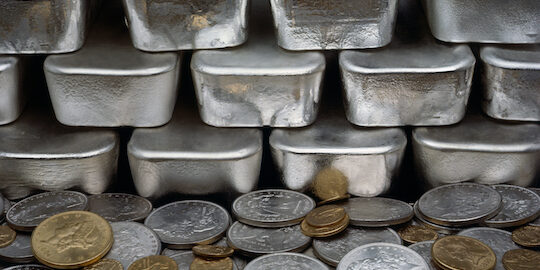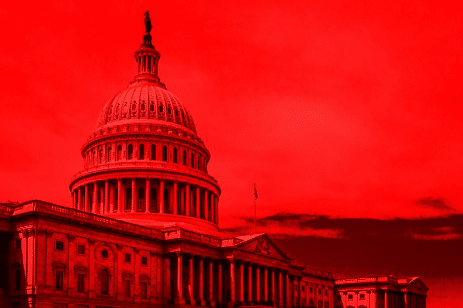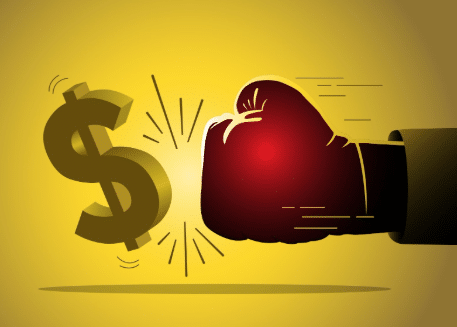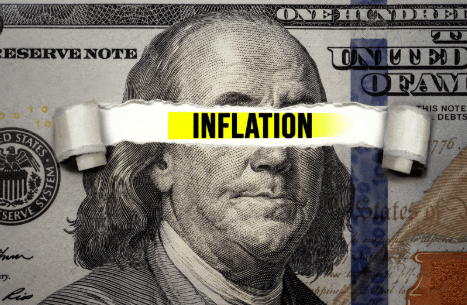
Gold vs Silver vs Platinum vs Palladium Prices
Gold and silver have been recognized as valuable metals and have been coveted for a long time. Even today, precious metals have their place in a savvy investor’s portfolio. But which precious metal is best for investment purposes? And why are they so volatile?
There are many ways to buy into precious metals like gold, silver, platinum, and palladium, and a host of good reasons why you should give in to the treasure hunt. So if you’re just getting started out in precious metals, read on to learn more about how they work and how you can invest in them.
Precious metals can be a good portfolio diversifier and hedge against inflation - but gold, perhaps the most well-known such metal, is not the only one out there for investors. Silver, platinum, and palladium are all commodities that can be added to your precious metals portfolio and each has its own risks and opportunities. In addition to owning physical metal, investors can gain access through the derivatives market, metal ETFs and mutual funds, and mining company stocks.
The Value of Gold
We’ll start with the granddaddy of them all: gold. Gold is unique for its durability (it doesn’t rust or corrode), malleability, and its ability to conduct both heat and electricity. It has some industrial applications in dentistry and electronics, but we know it principally as a base for jewelry, for gold rings, and as a form of currency.
The value of gold is determined by the market 24 hours a day, seven days a week. Gold trades predominantly as a function of sentiment - its price is less affected by laws of supply and demand. This is because the new mine supply is vastly outweighed by the sheer size of above-ground, hoarded gold. To put it simply, when hoarders feel like selling, the price drops. When they want to buy, a new supply is quickly absorbed and gold prices are driven higher.
Several factors account for an increased desire to hoard the shiny yellow metal. Systemic financial concerns: When banks and money are perceived as unstable and/or political stability is questionable, gold has often been sought out as a safe store of value. Inflation: When real rates of return in the equity, bond, or real estate markets are negative, people regularly flock to gold as an asset that will maintain its value. War or political crises: War and political upheaval have always sent people into a gold-hoarding mode. An entire lifetime’s worth of savings can be made portable and stored until it needs to be traded for foodstuffs, shelter, or safe passage to a less dangerous destination.
Today, gold is sought after, not just for investment purposes and to make gold jewelry and bullion coins, but it is also used in the manufacturing of certain electronic and medical devices using gold alloys. Gold (as of August 2020) was over $2,000 per ounce and up considerably from levels under $100 seen 50 years ago. What factors drive the price of this precious metal higher over time?
Investors have long been enamored by gold and the price of the metal has increased substantially over the past 50 years. Like most commodities supply and demand is incredibly important in recent years, but gold also retains additional values. Government vaults and central banks comprise one important source of demand for the metal. Investment demand, especially from large ETFs, is another factor underlying the price of gold. Gold sometimes moves opposite to the U.S. dollar because the metal is dollar-dominated, making it a hedge against inflation. Supplies of gold are primarily driven by mining production, which has leveled off since 2016.
Central banks hold paper currencies and gold in reserve. As the central banks diversify their monetary reserves and pricing - away from the paper currencies that they’ve accumulated and into gold - the price of gold typically rises. Many of the world’s nations have reserves that are composed primarily of gold. In fact, Bloomberg reports that global central banks are buying the most gold since the U.S. abandoned the gold standard in 1971. Russia has been the biggest buyer, followed by Turkey and Kazakhstan. In all, governments bought a total of 651 tonnes of gold in 2018.
The price of gold is generally inversely related to the value of the United States dollar because the metal is dollar-dominated. All else being equal, a stronger U.S. dollar tends to keep the price of gold lower and more controlled, while a weaker U.S. dollar is likely to drive the price of gold higher through increasing demand (because more gold can be purchased when the dollar is weaker). As a result, gold is often seen as a hedge against inflation. Inflation is when the price’s rise, and by the same token, prices rise as the value of the dollar falls. As inflation ratchets up, so too does the price of gold.
Silver Prices
Unlike gold, the price of silver swings between its perceived role as a store of value and its role in industrial uses. For this reason, price fluctuations in the silver market are more volatile than gold. So, while silver will trade roughly in line with gold as an item to be hoarded, the industrial supply/demand equation for the metal exerts an equally strong influence on its price. That equation has always fluctuated with new innovations.
Silver’s once predominant role in the photography industry - in recent years silver-based photographic film - which has been eclipsed by the advent of the digital camera. The rise of a vast middle class in the emerging market economies of the East, which created an explosive demand for electrical appliances, medical products, and other industrial items that require silver inputs. From bearing to electrical connections, silver’s properties made it a desired commodity without corrosion. Silver’s use in batteries, superconductor applications, and microcircuit markets. It’s unclear whether, or to what extent, these developments will affect overall non-investment demand for silver. One fact remains: Silver’s price is affected by its applications and is not just used in fashion or as a store of value.
Unlike gold, which is seen strictly as a store of value, silver also benefits from its wide use in many industrial applications. The metal has established uses in durability in the automotive sector, across various electronics products, in solar panels, and photography. New technologies such as silver oxide batteries, silver conductive inks, and various silver-based nanotechnologies in medical applications are all quickly becoming standards in their industries.
This industrial demand makes silver prices more volatile than gold and generally reactive to various measures of manufacturing data. Given this fact, ETFs that track silver prices or futures could be a better bet versus physical bullion, as they can be sold quite easily if investors think prices are too frothy.
Then there are costs to consider. Buying physical bullion, of any precious metal, comes with added costs investors may not be thinking of. First, investors pay an average of 5% to 6% in commissions to acquire silver coins and bullion, depending on the source. For example, the United States Mint produces several silver bullion coins, with the most popular one being the one-ounce American Eagle. These coins sell at a stiff premium to spot silver prices. Likewise, other coinage mints such as The Royal Canadian Mint also produce several silver bullion coins. However, these coins carry a similar premium when purchased directly from the mint. Third-party vendors also exist, but again, premiums to spot are prevalent.
For investors looking to gain access to the silver markets, owning both physical bullion as well as purchasing ETFs have their pros and cons. Basically, it comes down to what they are looking for. If an investor seeks an easy and instant investment of silver, the funds come up shining. However, if a person truly believes that the financial system will collapse, physical silver is an ideal alternative. Maybe owning both would be the most prudent move.
The Value of Platinum
Like gold and silver, platinum is traded around the clock on global commodities markets. It often tends to fetch a higher price (per troy ounce) than gold during routine periods of market and political stability simply because it is much rarer. Far less of the metal is pulled from the ground annually. Other factors determine platinum’s price.
Like silver, platinum is considered a white metal and an industrial metal. The greatest demand for platinum comes from automotive catalytic converters, which are used to reduce the harmfulness of emissions. After this, jewelers account for the majority of demand. Petroleum and chemical refining catalysts and the computer industry use up the rest.
Because of the auto industry’s heavy reliance on the metal for exhaust systems, platinum prices are determined in large part by auto sales and production numbers. “Clean air” legislation could require automakers to install more catalytic converters, raising demand. But in 2009, American and Japanese carmakers started turning to recycled auto catalysts or using more of platinum’s reliable - and usually less expensive - sister group metal, palladium, a safe haven.
Platinum mines are heavily concentrated in only two countries - South Africa and Russia. This creates greater potential for cartel-like action that would support or even raise platinum pricing. Investors should consider that all of these factors serve to make platinum the most volatile of the precious metals.
Today, platinum is mined in South Africa, which accounts for roughly 80% of the world’s production. Russia is the second-biggest producer in recent years. About half of the mined platinum goes into jewelry, where it is desirable because it looks silver in color but does not tarnish. Platinum is also stronger and more durable than gold. Platinum is a metal used in jewelry, automobiles, and electronics. Platinum is much stronger and rarer than gold. Traders can buy and sell platinum futures, while investors can participate with ETFs that specialize in the commodity. The price of platinum has been trending lower since the 2007-2008 financial crisis, as investors show greater interest in other metals like gold and South African mines have substantially increased production of platinum.
Platinum is one of the most valuable elements in the world, scratch resistant, 15 to 20 times rarer than gold (based on annual mining production), and considered one of the most costly precious metal commodities. However, while platinum traded at a significant premium to gold for decades, it has not since 2008; as a weak global economy put a damper on demand for the precious metal, but investor unease about central bank stimulus and other economic matters sent gold prices higher.
Since the financial crisis of 2007-2008, platinum has generally performed worse than other metals like gold, silver, and palladium. Market observers believe a crash in platinum markets in 2008 scared the investment class away from the metal, leaving the automobile and jewelry industries as platinum’s only source of demand. In addition, South African mines have substantially increased production of platinum since 2014 and added to global supplies.
Palladium
Lesser known than the above three metals is palladium, which has more industrial uses. Palladium is a shiny, silvery metal, a white metal used in many types of manufacturing processes, particularly for electronics and industrial byproducts. It can also be used in dentistry, medicine, chemical applications, jewelry such as palladium engagement rings, as catalytic converters, and groundwater treatment. It has durability. The majority of the world’s supply of this rare metal, which has the atomic number 46 on the periodic table of elements, comes from mines located in the United States, Russia, South Africa, and Canada.
Jewelers first incorporated palladium into jewelry in 1939. When mixed with yellow gold the alloy forms a metal stronger than white gold. In 1967, the government of Tonga issued circulating palladium coins touting the coronation of King Taufa Ahau Tupou IV. This is the first recorded instance of palladium used in the coinage. Metalworkers can create thin sheets of palladium down to one-two hundred fifty thousandths of an inch. Pure palladium is malleable, but it becomes stronger and harder once someone works with the metal at room temperature. The sheets are often used in applications like solar energy and fuel cells. The largest industrial use for palladium is in catalytic converters because the metal serves as a great catalyst that speeds up chemical reactions. This shiny metal is 12.6% harder than platinum, making the element also more durable than platinum.
Palladium price charts have historically shown fair volatility. Prices peaked at more than $2800 per ounce in February 2020 before plummeting to less than $1600 a month later. Palladium has recovered somewhat since then, trading for around $1,800 an ounce. Investors interested in adding palladium to their portfolios might find the easiest path is through ETFs or similar vehicles. Several exchange-traded funds invest in palladium, a rare metal with industrial and other applications. The Aberdeen Standard Physical Palladium Shares ETF is a pure-play palladium ETF. Palladium prices are volatile, largely because the market is small and easily moved by supply-and-demand dynamics.
ETF options for investing in palladium are relatively limited, but the Aberdeen Standard Physical Palladium Shares ETF (PALL) is perhaps the largest. As of March 31, 2020, the fund held more than 131,500 troy ounces at a secured vault in London. PALL fund may be the purest palladium play given that its prices derive directly from the London Platinum and Palladium Market, a major trading center for platinum-group metals. The fund was founded in December 2009 and has returned more than 17% annually since its inception. The annual expense ratio is 0.60%.
What many investors are discovering is that with tighter markets and stronger fabrication demand, palladium may see stronger prices than platinum in 2020 and beyond. Palladium could move to a premium over platinum at times over the next several years. These tighter fundamentals are not being lost on investors, who may show more interest in palladium than platinum going forward.
The majority of the world’s supply of palladium comes from just two countries: Russia and South Africa. Russia currently accounts for close to 40% of annual global mine supplies, with South Africa supplying slightly less. The output from mines in other parts of the world, as well as supplies from recycling efforts, make up the balance of available supplies. The demand side of the equation, though, is what has attracted the interest of investors: fabrication and investor demand have increased solidly over the years. And the primary source of this demand? Gasoline-powered vehicles, which require palladium in their catalytic converters to control exhaust emissions. Rapidly growing gasoline-powered vehicle production in the U.S., China, India, and elsewhere require increasing supplies of palladium.
With the attractive supply/demand fundamentals, combined with the relatively small size of the market compared to the gold and silver markets, it is easy to see why investors are attracted to palladium as a way to diversify an investment portfolio and speculate in an often-volatile and fast-moving market.
Gold vs Silver vs Platinum vs Palladium Prices
We can see from the above information of the precious metals prices that they all offer unique inflationary protection - they have intrinsic value, they carry no credit risk, and they cannot be inflated. That means you can’t print more of them. They also offer genuine “upheaval insurance” against financial or political/military upheavals.
From an investment theory standpoint, precious metals also provide a low or negative correlation to other asset classes like stocks and bonds. This means that even a smaller percentage of precious metals in a portfolio will reduce both volatility and risk.
Precious metals provide a useful and effective means of diversifying a portfolio. The trick to achieving success with them is to know your goals and risk profile before jumping in. The volatility of precious metals can be harnessed to accumulate wealth. Left unchecked, it can also lead to ruin.
The financial market is crumbling and EVERYONE will be affected. Only those who know what's going on and PREPARE will survive... dare we say thrive. Our 7 Simple Action Items to Protect Your Bank Account will give you the tools you need to make informed decisions to protect yourself and the ones you love.












